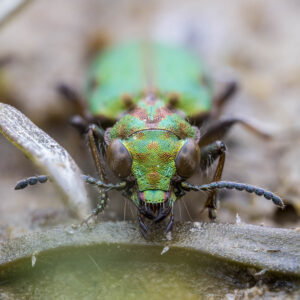Q: Why do pelicans fly so low over the water? I’ve seen it many times, but only recently considered that it must take work to fly so low without falling in. [Tamara, Oakland]
A: It turns out that Paul Ehrlich answered this very question in a 1988 guide to the birds of Stanford University, of all places: “Skimming permits the birds to take advantage of an aerodynamic phenomenon known as ‘ground effect.'” When a bird, or an airplane, flies less than a wingpsan’s distance from the ground, flight is much more efficient due to slight changes in airflow patterns around the wing. Land is usually too cluttered with grass and trees and whatnot to permit such flight, but calm Bay waters are perfect for it.
That’s not the only way pelicans use slight changes in air currents and pressure to conserve energy. Pelicans (both brown and American white) are among the champion soaring birds we observe near shore in the Bay Area. Like many other birds, pelicans often fly in V-formation. During flight, an updraft is created by the upstroke of one bird’s wing, and the following bird can take advantage of this wingtip vortex to save a significant amount of energy.
White pelicans, like turkey vultures, rise up on thermals (pillows of hot air), wheeling around in great circles–up, up, up. Then they drop, floating downward–losing altitude while gaining distance. I once watched a group of 36 white pelicans for over an hour. Without flapping once, they traveled more than 15 miles.
Pelicans also take advantage of strong winds and wave action by a flight strategy called dynamic soaring. Actually, the true masters of this are albatrosses, which can fly for days without flapping. We have two species offshore–the black-footed and Laysan albatross, which nest thousands of miles from here. In light winds, albatrosses take advantage of the slight air pressure differences created by rising and falling waves. They rise against the air backed up by the wave crest and then drop down again.
Albatrosses can even fly against the wind using little or no energy. They repeatedly cross the boundary between areas of different wind speed (lower just above the water, faster ten feet up). They fly against the wind to gain altitude (rising into the gust), then zigzag down (falling into the lee) to gain speed.
The external nostrils, called nares, found in this group of seabirds (including petrels and shearwaters) are suspected to aid in detecting airspeed in the same way that airplanes use a device called a pitot tube (the little L-shaped thing that sticks out the side of a plane).
So next time you’re watching pelicans or, if you’re lucky, albatrosses flying low or soaring overhead, tip your hat to two champions of energy conservation.
Send your questions to atn@baynature.org.




